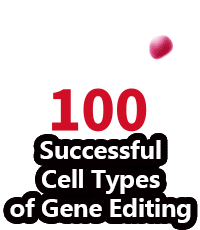Head and Neck Cancer Driver Mutations Affect NOTCH Pathway, CRISPR Screen Finds
Researchers from the University of Toronto and elsewhere started by digging into available somatic mutation data for HNSCC and followed up on candidate long-tail HNSCC-related alterations with CRISPR-Cas9-based gene editing experiments in mouse models. From a set of nearly 500 genes with relatively infrequent, but recurrent, mutations in human HNSCC cases, they narrowed in on a small set of apparent tumor suppressor genes - a collection that included at least two genes that feed into the NOTCH pathway.
"Our results show that oncogenic mutations in 67 percent of human HNSCC cases converge onto the NOTCH signaling pathway, making NOTCH inactivation a hallmark of HNSCC," senior and corresponding author Daniel Schramek, a researcher affiliated with Mount Sinai Hospital in Toronto and the University of Toronto, and his colleagues wrote in a paper published in Science on Thursday.
The researchers started from previously generated somatic mutation data for HNSCC, focusing in on 484 genes with recurrent mutations in HNSCC that are less common than those affecting driver genes such as TP53.
"The most common genetic alterations in HNSCC affect p53 (71 percent), FAT1 (23 percent), CDKN2A (22 percent), PIK3CA (18 percent), NOTCH1 (17 percent), and HRAS (6 percent)," the authors explained, "followed by a 'long tail' of hundreds of individually rare mutations, most of which lack biological or clinical validation."
From there, the team used the "long tail" mutation collection to develop lentiviral single-guide RNA (sgRNA) libraries for in vivo CRISPR-based knockout screens in mice, searching for alterations that pushed HNSCC development in mice forward compared to control mice screened with more than 400 non-gene-targeting sgRNAs and another 414 sgRNAs targeting random genes not guided by the HNSCC data.
After validating the mouse screening strategy, the researchers injected sgRNA libraries into mouse embryos that carried conditional HNSCC-related mutations in PIK3CA, HRAS, or p53 or mice expressing a high-risk version of human papillomavirus. Over just a few weeks, they reported, mice missing genes from the long tail mutation set developed HSCC tumors as well as cutaneous squamous carcinoma.
In contrast, the team found that mice screened with control libraries did not develop the cancers over the course of a year. Subsequent experiments suggested that HNSCC was not spurred on in mice carrying conditional PIK3CA mutations over four months when breast cancer-related genes were altered by gene editing.
When they narrowed in on a group of 15 potential tumor suppressor genes, each altered by at least two of the sgRNAs in the mouse tumors, the researchers noted that NOTCH2 and NOTCH3 genes turned up in that set, as did ADAM10 and AJUBA that, when mutated, were subsequently found to interfere with NOTCH signaling.
The team took those findings back into the human HNSCC context, where it saw mutations in AJUBA in 7.5 percent of HNSCC cases assessed for the Cancer Genome Atlas project, for example. ADAM10 was altered in 0.8 percent of the 504 HNSCC tumors from that collection.
Heterozygous mutations were even more common in HNSCC, the researchers noted, coming in at more than 11 percent of tumors for the AJUBA gene, and at 12.7 percent for ADAM10.
From these and other findings, the authors called NOTCH "one of the most commonly dysregulated pathways in HNSCC."
In addition, they suggested that the work "shows the power of integrating cancer genomics with mouse modeling in vivo CRISPR screens to uncover tumor-suppressive pathways in the long tail of cancer-associated mutations."
Ubigene Biosciences is co-founded by biological academics and elites from China, the United States, and France. We are located in Guangzhou Science City, which serves as a global center for high technology and innovation. Ubigene Biosciences has 1000㎡ office areas and laboratories, involving genome editing, cell biology technology, and zebrafish research. We provide products and services for plasmids, viruses, cells, and zebrafish. We aim to provide customers with better gene-editing tools for cell or animal research.
We developed CRISPR-U™ and CRISPR-B™ (based on CRISPR/Cas9 technology) which is more efficient than general CRISPR/Cas9 in double-strand breaking, CRISPR-U™ and CRISPR-B™ can greatly improve the efficiency of homologous recombination, easily achieve knockout (KO), point mutation (PM) and knockin (KI) in vitro and in vivo.
Genome Editing Platform
——Focusing on the Application of CRISPR-U™ and CRISPR-B™ Gene Editing Technology
1. Provides various types of gene-editing vectors for different species.2. Provides different virus packaging services, including lentiviruses, adenoviruses and adeno-associated viruses.3. Provides high-quality services for gene knockout, point mutation and knockin cell lines.
Cell Biology Platform
——Focusing on primary cell
1. Provides over 400 types of primary cells.2. Provides culture strategies and related products for different cell types.3. Provides cell biology-related services such as cell isolation, extraction and validation.
